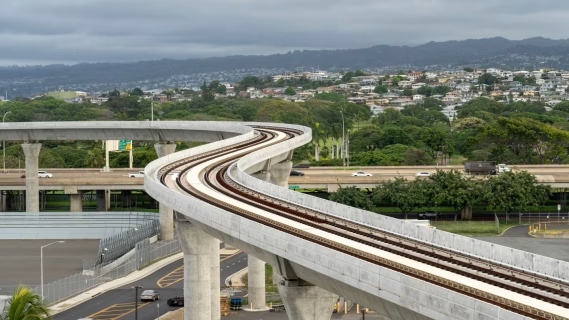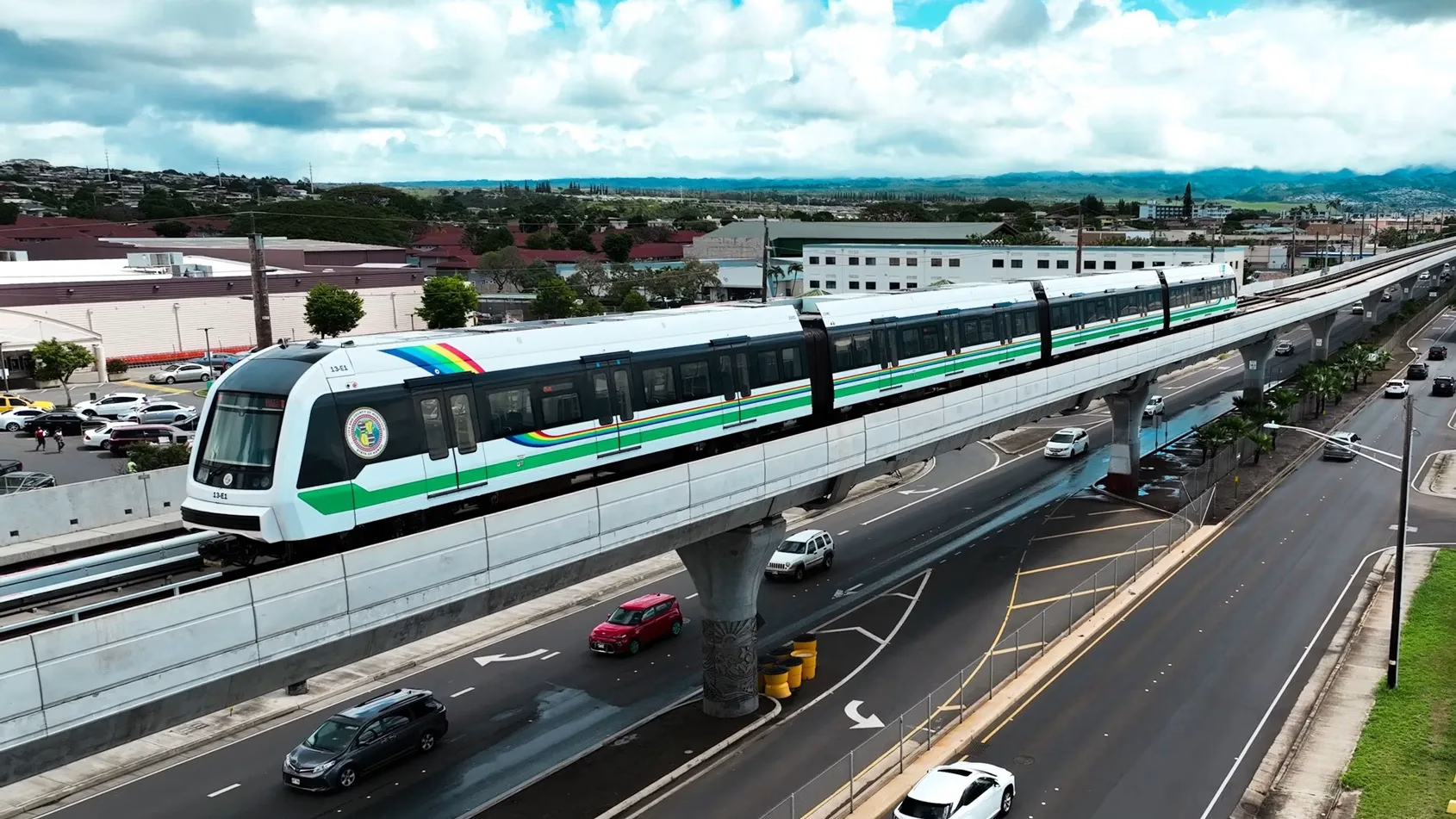This week in Honolulu, the Skyline rail project marked a pivotal milestone as construction officially commenced on the City Center Guideway and Stations (CCGS) segment. At the future Kaʻākaukukui (Civic Center) Station in Kakaʻako, HART hosted a meaningful groundbreaking ceremony complete with a traditional Hawaiian blessing led by Kahu Kordell Kekoa. Attendees included Mayor Rick Blangiardi, HART leadership, state and city officials, and representatives from Tutor Perini Corporation, the project’s contractor.
Building Tomorrow’s Transit Backbone
According to Mayor Blangiardi, “Breaking ground on the third segment of Skyline is not just about building infrastructure. It is about laying the foundation for this island’s future.” In addition, HART’s Executive Director Lori Kahikina expressed gratitude toward partners and staff, citing perseverance and cooperation as keys to delivering the project on time and within budget for Honolulu’s taxpayers.
Also Read Honolulu’s first light rail transit system opens its doors to public
What’s Being Built And What Lies Ahead
The CCGS segment will deliver six new rail stations linked by approximately three miles of elevated guideway. This stretch begins near the Kahauiki (Middle Street Transit Center) Station and concludes just east of the intersection of Halekauwila Street and South Street at Kaʻākaukukui Station. What’s more, initial construction work has already begun in the Iwilei area, with crews drilling support shafts for guideway columns. Work is scheduled Monday through Friday, with possible Saturdays, between 6 a.m. and 5 p.m. Additionally, as downtown utilities are relocated, the project will also require targeted road closures across Kalihi, Iwilei, Downtown, Chinatown, and Kakaʻako. Further, the entire CCGS phase is slated for completion by 2030, paving the way for Skyline’s transit expansion deep into urban Honolulu.

Interesting Facts About the CCGS Phase
What makes this phase of Skyline particularly compelling is the cultural and technical depth woven into its execution. The station names, including Kaʻākaukukui (“the north/right light”) and Kūwili (“water swirling in place”), reflect careful consultation with the Hawaiian Station Name Working Group to honor local heritage. Furthermore, unlike earlier segments that relied on precast box-girder construction, this phase employs more cost-effective cast-in-place concrete girders. This optimizes both budget and build efficiency. Notably, the entire Skyline line is the first elevated, driverless metro system in the U.S. to feature platform screen doors, a symbol of modern transit innovation for Hawaiʻi. As this segment unfolds over the next five years, it will serve as both a functional transit upgrade and a meaningful chapter in Honolulu’s urban and cultural evolution.
Atlanta Beltline Unveils $3.5B Light Rail Proposal to Connect Neighborhoods Across the City
Project Factsheet
Scope: The project covers six new rail stations and approximately 3 miles of elevated guideway
Route: It runs from near Middle Street Transit Center (Kahauiki) to Civic Center (Ka‘ākaukukui)
Contractor: Tutor Perini was awarded the design-build contract for roughly $1.66 billion
Design: Parsons Corporation serves as Tutor Perini’s design subcontractor
Timeline: Design begins immediately; construction starts late 2025; completion by 2030
Hours: Construction runs weekdays 6 a.m.–5 p.m.; Saturdays as needed
Closures: Road closures expected in Kalihi, Iwilei, Downtown, Chinatown, and Kaka‘ako
Funding: The contract triggers release of the next $250 million in federal funds under FFGA
Largest Contract: This is the largest single contract in the Skyline project to date
Segment: Represents Skyline’s third and final urban phase entering Downtown Honolulu
Alignment Shift: The “Mauka Shift” alignment adjustment reduces utility relocation impacts
Legacy: Skyline is Hawaiʻi’s first fully elevated, driverless metro with platform screen doors
Also Read Jacobs to Lead Pier B Rail Upgrades at Port of Long Beach

